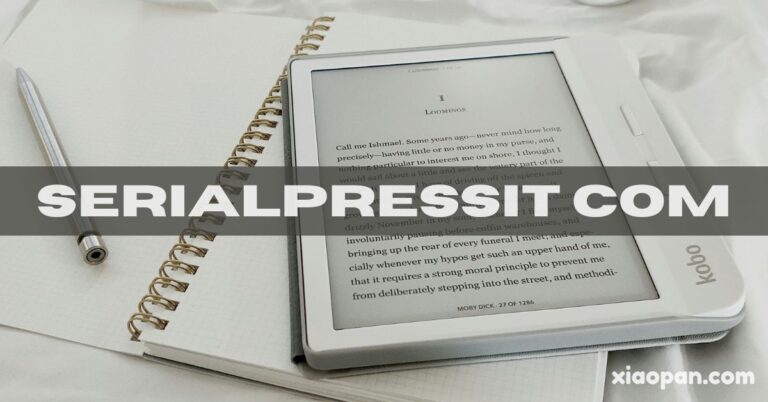Cursive: Your Secret Weapon for Focus & Creativity in the AI World
When was the last time you wrote something by your hand with flowing strokes and looping letters? You can’t remember, right? In an age where AI completes our sentences and screens dominate our days, cursive writing offers a refreshing escape.
As we rely more on technology, learning insightful and mindful skills like cursive writing has become more important than ever. This practical style of handwriting activates brain areas linked to memory, creativity, and focus, making it a hidden superpower in today’s digital world.
If you want to jot down your thoughts or want to learn something new, cursive writing engages your mind in a way that typing simply can’t. This small but powerful habit can sharpen your thinking and inspire original expressions.
In this article, we’ll learn the history, benefits, and tools you need to learn this secret weapon to boost focus and creativity in the world of AI.
What You’ll Learn from This Article:
Here’s what you’ll learn in this article:
- Cursive writing traces its origin back to ancient times, with early forms being used by the Romans and Greeks for practical purposes like contracts and recordkeeping.
- The survey shows that only 37% wrote primarily in cursive, while 55% used a mix of cursive and print styles.
- Learning cursive writing can improve hand-eye coordination and fine motor skills.
- Consistent practice is key to mastering smooth, connected strokes.
- Start with lowercase letters before moving to uppercase ones.
- Patience and persistence make cursive writing both fun and rewarding in the world of AI.
What Is Cursive Writing?
Cursive writing is a style of handwriting where letters are joined and flowing, unlike print or block letters. As per Wikipedia, its roots trace back to ancient periods, with early forms used by the Romans and Greeks for practical objectives like agreements, contracts, and record-keeping.
Modern cursive writing, especially the italic style, appeared in 15th-century Italy. The goal of cursive writing is to make writing faster and smoother, especially when writing by hand for extended periods.
Why Learning Cursive in the Age of AI Is Important?
As digital tools such as keyboards and touchscreens conquer our modern-day communication, no one can deny the importance of mastering cursive writing. Learning cursive can offer concentration, sharp memory, creativity, and other real-world benefits.
There remains a question of why people should learn cursive when artificial intelligence has transformed the whole world’s system.
Let’s have a quick look at the answer:
1: Improves Fine Motor Skills
One of the most significant advantages cursive writing alphabets offer is refined and improved motor skills. The fluid movement or motion of cur-sive writing engages muscles and coordination in your wrist and hand, which can improve overall motor development skills of individuals.
2: Boosts Brain Activity
Several studies and research have shown that practicing and mastering cursive writing sharpens different areas of the brain related to memory, language, and critical thinking more than typing or block writing. People who have been practicing it have been found more sharper, smarter, creative, and more imaginative than others who don’t.
3. Enhances Signature Design
To sign a document or contact bank papers or artworks, people often need a different signature style so that no one can copy it to harm them. Cursive writing makes this practice into a real one.
A personal signature in cursive writing is an important aspect of originality and professionalism. So, mastering cursive writing helps you to develop an original, creative, and different signature design.
4. Fosters Reading Historical Documents
Everyone does not possess the ability to read historical and legal documents. But learning cursive writing enables individuals to read the U.S. Constitution, old letters, and vintage books with ease. This approach not only sharpens your knowledge but also opens the doors to attractive and beneficial employment in the future.
While developing such valuable skills can greatly benefit students. But it often requires ample time, consistent practice, and dedication. Unfortunately, students who are already burdened with academic projects, particularly dissertations, struggle to find that time.
If you are facing a similar challenge, you should reach out to a legit dissertation writing service like The Academic Papers UK. This platform not only delivers high-quality, AI-free dissertations but also assists in dissertation defence preparation, freeing up your time to invest in learning essential skills for academic and professional growth.
Cursive Toolkit: What You Need Before You Begin
Before digging into the steps to learn cursive writing, let’s understand what tools you need to pick:
- Lined writing paper or cursive writing worksheets
- Pencil with a good eraser
- Ballpoint or gel pen
- Ruler
- Cursive practice books or printable sheets
Easy Start: Simple Steps to Re-engage with Cursive Writing
According to Reddit, a survey of handwriting teachers discovered that only 37% wrote primarily in cursive, while 55% used a mix of cursive and print styles. In today’s digital age, cursive handwriting may seem like a forgotten art.
But for many, learning cursive is not only a useful skill. It’s also a gateway to improved fine motor skills, deeper cognitive development, and a more personal style of expression.
Whether you are a student, teacher, parent, or lifelong learner, mastering cur-sive writing can enrich your communication skills and add a touch of elegance to your writing.
Let’s begin your journey toward smart, readable handwriting.
1: Understand the Basic Structure
One of the most important steps to master cursive writing is to understand the basic structure. Let’s be clear that cursive writing, known as creative writing, is categorised into three types of letters:
- Lowercase letters
- Uppercase letters
- Connecting strokes
What you have to do is learn the shape and movement of each class separately. Cursive letters generally follow a slanted, curved, and continuous pattern.
2: Learn the Cursive Alphabet – Lowercase First
Begin with lowercase letters, as they are the foundation of most words. Start with simpler letters that demand fewer strokes. Here is an example to help you understand better:
- Group 1 – Loop Letters: e, l, f
- Group 2 – Curve Letters: a, c, o
- Group 3 – Up and Down Letters: i, u, t
- Group 4 – Complex Connectors: b, v, w, x
Each letter has an entry stroke and exit stroke. Practice one set every day. For mastery, you can repeat each letter until it feels smooth and natural.
3: Master Uppercase Letters
Uppercase cursive letters are generally larger and often more decorative. They may not always connect to the next letter, but they help open proper nouns and sentence beginnings with flair. Begin with easy letters like C, E, L, and slowly move to more complicated ones like Q, G, and F.
Practice writing full names and titles like:
- “Charlotte”
- “Elegant Lettering”
- “George Washington”
Note: Some uppercase letters may have numerous variations, especially in older cursive styles, so find the one that feels suitable for you.
4: Practice Connecting Letters
The beauty of cursive lies in the connection between letters. Focus now on writing two-letter and three-letter combinations.
Some helpful examples:
- Two-letter pairs: an, in, er, ou, th
- Three-letter clusters: the, ing, all, est
Pay attention to the smooth transition between strokes and how each letter enters and exits.
5: Write Whole Words
Once you are confident with the alphabet and letter combinations, begin writing simple words in cursive. You can start with basic words, and this will help you continue your learning journey with ease. Here is the list of some basic words you can start with:
- Cat
- Bed
- Rain
- Hope
- Fire
Then, try longer words:
- Amazing
- Creative
- Handwriting
- Confidence
Check for consistent size, slant, spacing, and fluidity. Make corrections gently and repeat as needed. Use tracing worksheets initially, then try freehand writing once you feel stable.
6: Practice Full Sentences
Now that you have comprehended how to form words, extend your rehearsal to full sentences. This is where you’ll really create rhythm and flow. Begin with short sentences:
- “The sun sets in the west.”
- “Practice makes a man perfect.”
- “I love to write.”
Now you can move to more extended sentences or copy sections from textbooks. Try writing your opinions or journaling in cur-sive to build daily fluency.
7: Work on Speed and Consistency
With technique under control, it’s time to focus on writing speed and maintaining consistency in:
- Letter height and slant
- Smooth connections
- Equal spacing between letters and words
Avoid rushing. Speed comes naturally with comfort and regular practice. Set a timer for 5 minutes and write as many neat sentences as possible without sacrificing legibility.
5 Best Tips for Cursive Writing Success
Here are some valuable cursivee writing tips to help you in your learning journey:
1: Be Patient with Yourself
Cursive writing takes time to master, particularly if you are transitioning from print. Don’t panic or rush. Hope for some irregularities and blunders in the start, and treat each session as an improvement. Keep in mind that even experienced and expert calligraphers once labored and struggled with their loops and strokes.
2: Use Lined or Grid Paper
One of the most significant challenges in the cursive learning journey is keeping uniformity in letter height and slant. Lined paper with margin guides or grid paper provides structure, helping you train your muscle memory. Over time, your hand will naturally follow the guidelines even on blank paper.
3: Maintain Proper Posture
Do you know that posture directly affects the flow of your writing? So, sit upright, keep your shoulders relaxed, and ensure your feet are flat on the floor. Tilt your paper about 45 degrees, particularly if you are right-handed, to enhance letter alignment and relieve wrist strain. This approach will help you learn cursive with ease.
4: Practice Daily
Cursive writing practice can make the learning journey faster and easier. Consistency is the key in mastering anything. What you need to do is to practice at least 15-20 minutes of focused practice each day.
This will make a significant difference. Use worksheets, trace letters, or free-write sentences to gradually build both speed and neatness. Checking your progress weekly can be a good way.
5: Incorporate Cursive into Real Life
Bring cursive writing into everyday projects, especially to support learning. Mark your name in cursive whenever feasible. You can write thank-you notes, journal entries, or personal memos by hand to enhance your learning practice.
Mastering cursive will not only help you come up with insightful ideas for your research papers. This real-life application not only enhances fluency but makes the skill significant and delightful.
Common Cursive Writing Mistakes and How to Fix Them
Cursive writing enhances with knowledge, practice, and correction. Here is some common mistakes learners face during their learning journey and how to overcome them:
1. Inconsistent Slant
Letters in cursive flow crossways at a consistent angle. Inconsistent slants can disrupt the visual rhythm and make writing look uneven.
Solution: Utilise lined paper with pre-marked slant guides or draw faint diagonal guidelines yourself. Practice one letter repeatedly and just concentrate on holding the same angle throughout.
2. Irregular Letter Sizes
Variations in letter height can cause confusion between letters like a, o, and e, or l and t. Solution: Learners can use worksheets that separate lines into base, mid, and upper zones.
3. Unclear Connections
Smooth transitions between letters are important in cursive. When connections break or overlap incorrectly, words become unclear.
Solution: You need to slow your pace during writing drills. Practice two-letter combinations to get a better sense of how letters naturally link. Use flow exercises to enhance continuity.
4. Cramped Writing
Tight spacing makes cursive harder to read and can distort letter shapes. It’s often a result of writing too fast or holding the pen too tightly.
Solution: Focus on spacing leave a finger-width between words and slightly more room between letters. Practice on wide-ruled paper and check your grip to ensure your hand remains relaxed and mobile.
Can AI Truly Replicate Human Creativity, and How Does Cursive Help Humans Maintain Their Creative Edge?
AI can mimic human creativity by analysing patterns and generating content, but it lacks sentiment, instinct, and personal experience, which are the core elements of true creativity. Humans normally create from memories, feelings, and imagination.
That’s where cursive writing helps. Writing by hand, particularly in cursive forms, diverts the mind, increases focus, and opens creative thinking. Learning cursive writing can help students come up with winning and insightful academic projects, particularly dissertations or thesis.
But if you feel you need pesonalised support to complete your project, you can contact professional dissertation writing firms such as Affordable Dissertation UK to ease your academic journey.
Additionally, platforms such as Cheap Essay Writing are among the leading academic assistance providers, offering expert guidance at reasonable prices for students seeking quality help.
Is Cursive Writing Still Used in UK?
Yes, cursive writing is still taught and used in many United Kingdom schools, especially at the introductory level. It allows children to improve handwriting fluency, spelling, and fine motor skills. While digital tools are now common, cursive writing is appreciated for creating personal expression and handwriting clarity.
Is Cursive Writing Too Old to Use Again?
Cursive writing is not too old to use again because it’s timeless. While modern communication relies heavily on typing, cursive writing still has a significant place in educational, artistic, and personal life. It improves motor talents, promotes slower, thoughtful writing, and creates a unique personal touch.
Final Thoughts
Learning cursive writing is more than a school training. It’s a talent that boosts your cognitive capabilities, refines your hand coordination, and adds beauty to your communication. With the correct strategy, constant effort, and some inventiveness, anyone can learn the elegant rhythm of cursive.
Whether you are writing heartfelt letters, journaling your thoughts, or simply signing your name, cursive adds a personal and artistic touch to everything you write.
So pick up your pen, find your rhythm, and let your handwriting flow!
Stay updated with all our recent articles — visit xiaopan today.







